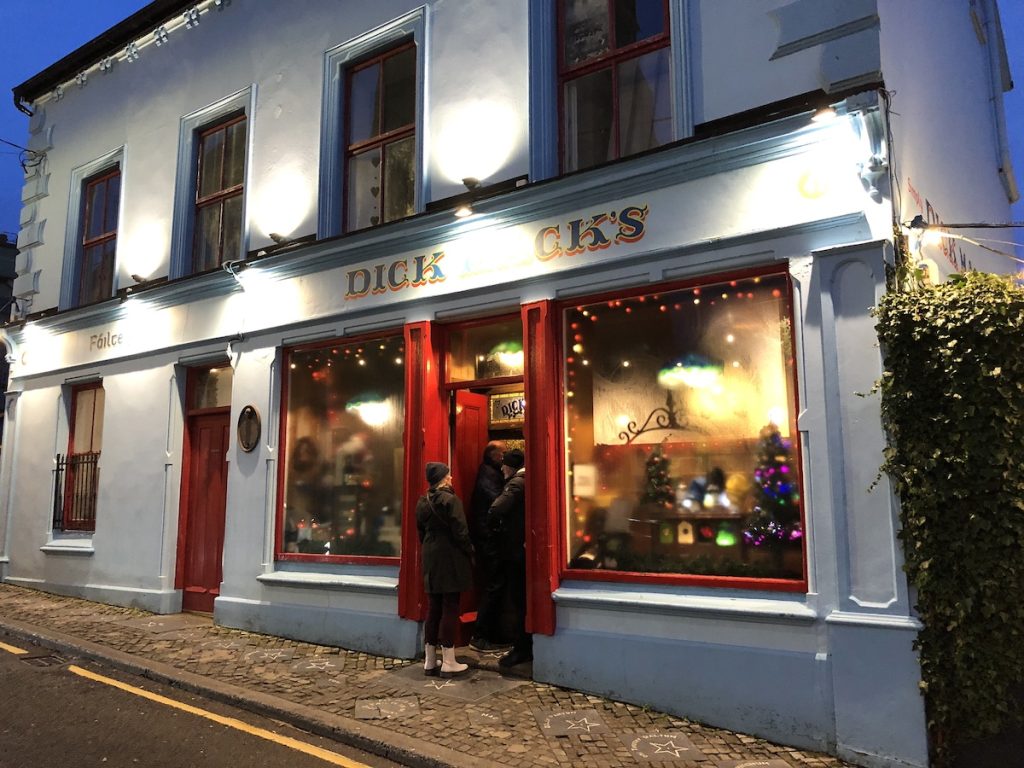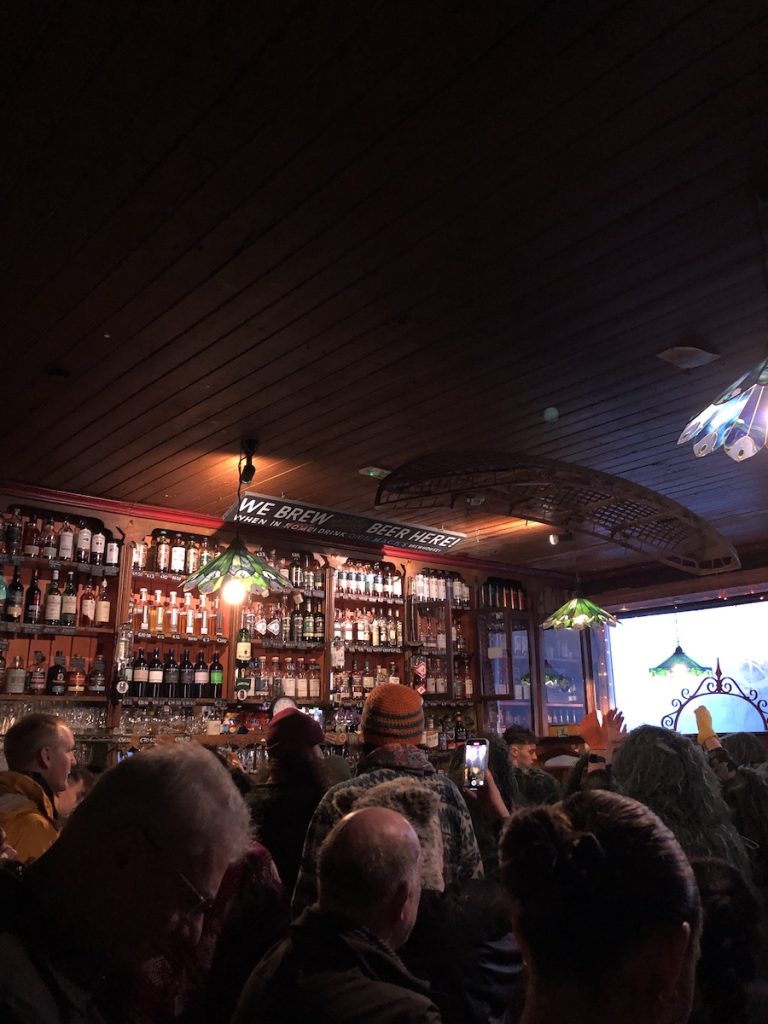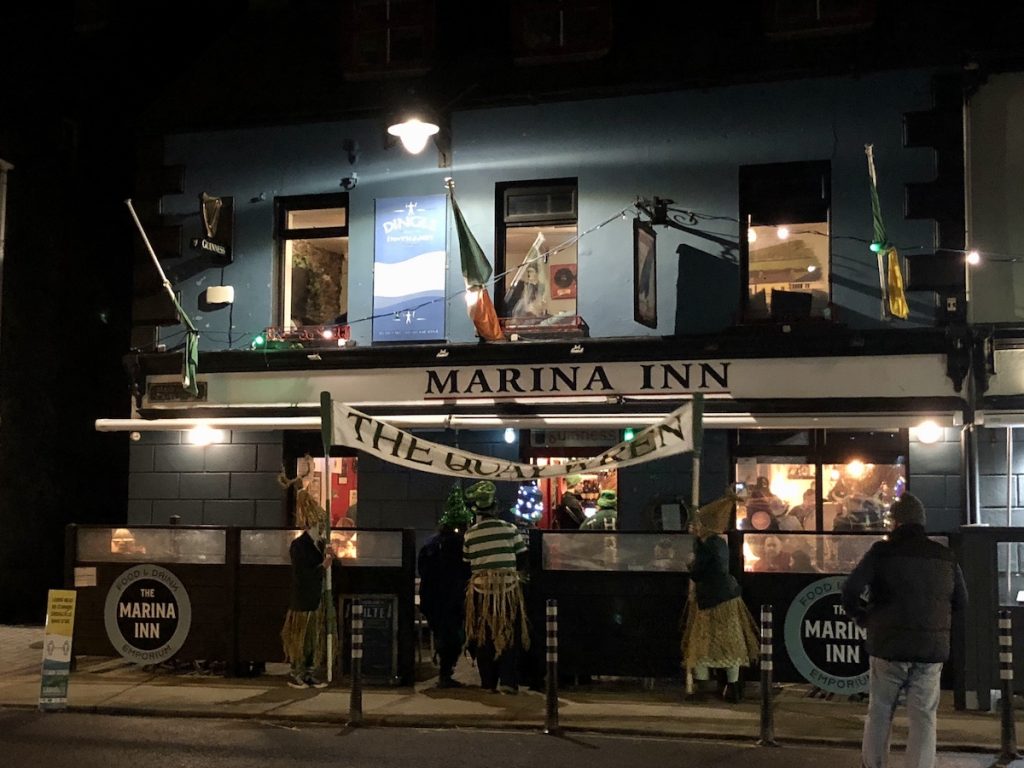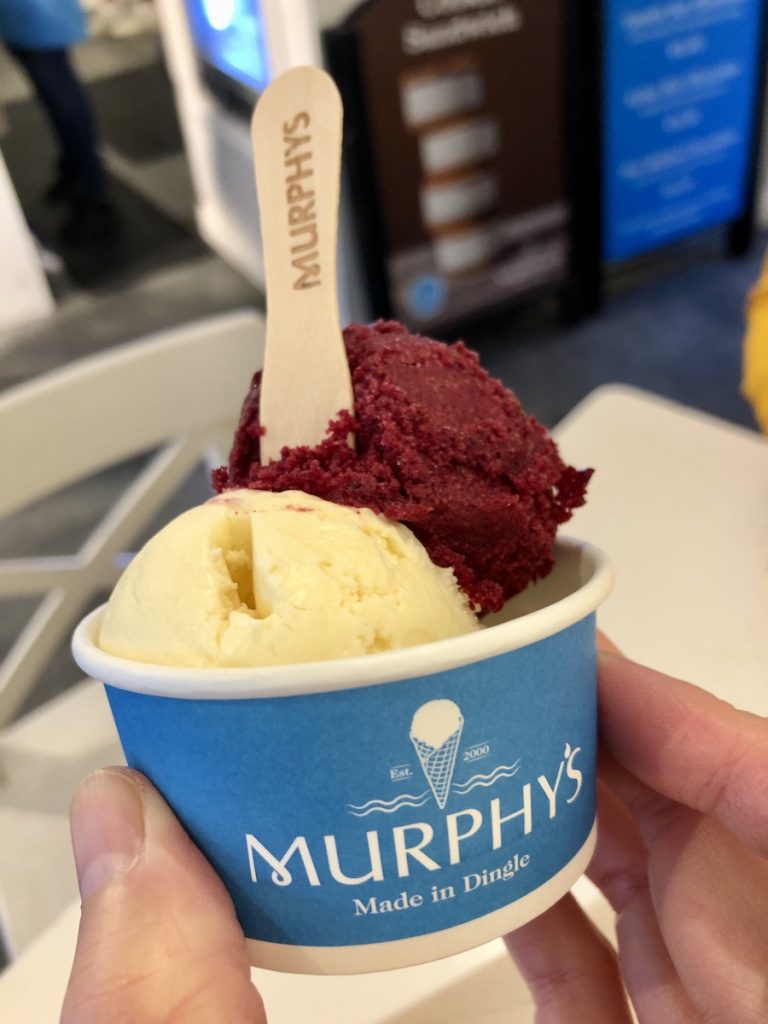
We hadn’t been walking through Dingle very long when two girls with long curling tails passed me in the street.
I was surprised by this, as you might imagine. But then I began to ponder the possibilities of growing up in a place where girlfriends had tails. I mean, if that’s how they do things in Dingle, who am I to complain?
The wake of their perfume had barely disbursed when a man shuffled past clad in a some sort of wicker contraption resembling an oblong lobster pot or a sheaf of wheat. I was just trying to decide which comparison was more apt when I was interrupted by a frantic tugging on my sleeve.
“A nattō man!” my wife said, pointing at the fellow I’d just finished describing.
I cast aspersion on this immediately. There are no fermented soybeans on the Dingle peninsula — maybe even in the whole of Ireland. And if there were, I’d have smelled them.
Far from discouraging her, my denials only drove my errant spouse to Google whatever it was she thought she saw with a determination bordering on — I’m sure you’ll forgive me for saying so — bordering on stubbornness.
“It looks just like the straw that nattō used to be wrapped in!”
She shoved her phone towards my face, but I brushed it aside.
“You know how I feel about that slime,” I said, firmly but gently. “Now could we just get some ice cream?”
“But the nattō m—”
“Ice cream.”
We made our way to Murphy’s, the famous Dingle institution, where I had a rather expensive scoop of Dingle Sea Salt and a scoop of Irish Brown Bread in a waffle cone. I would try to describe the delicate taste of this homemade dairy delight for you, but I was distracted by a fife and drum, followed by several more girls with tails tugging their own wicker man—
“Nattō man!”
“Stop it.”
—tugging their own wicker man by an appendage that would have been his sleeve if wicker clad men had sleeves.
Clearly there was something going on, and so, being your highly responsible and diligent correspondent, I set out to uncover what that something was.
“Two pints of Guinness, please,” I shouted to a man behind the bar at Dick Mack’s.

The place was absolutely heaving with people in all manner of colour-coordinated costumes whose conversations were regularly interrupted by the ingress of drummers and fife players and, at Dick Mack’s, by a group of four Saudi sheiks who, if it wasn’t for their long white thobe and Red-and-White Summer Tablecloth checked keffiyeh, I would have sworn were Irish due to their red hair and ruddy complexions, and the pints of Guinness clutched in each fist.
“It’s mad, isn’t it?” a girl next to me shouted in my ear.
“It certainly is,” I said, while only being vaguely aware of what this madness was.
I’ll spare you any further confusion, and myself further word count, because this saga is already spiralling out of control.
To cut an already long story short, we’d stumbled into Wren Day in the town where this nearly-forgotten tradition has seen its most passionate revival.
You see, when other people in Ireland are walking off their seasonal indulgences in the hills on St. Stephen’s Day, and Canadians are fighting with family members on Boxing Day (I assume that’s what it means — at least, that’s what it was in my house), the roughly 1,500 citizens of Dingle parade through the streets in a marching band pub crawl that begins at 4pm and goes well after 2am.
But why “wren”? And what does it have to do with December 26th?
There are a few different explanations, and all involve avine treachery.
One says that a treacherous wren betrayed Irish soldiers who were fighting against the Norse invaders by beating its wings on their shields. Another version has the wren pecking at the drums of Irish soldiers, revealing their location to the invading English forces of Oliver Cromwell, who then went on to massacre the patriots.
The most popular seems to involve a similar betrayal of St. Stephen, which resulted in his becoming the first Christian martyr — hence the association with St. Stephen’s Day.
There may also be a more esoteric connection drawn from the depths of the pre-Christian past. In Irish mythology, birds were seen as intermediaries between this world and the next, and their flight patterns were studied as auguries. Some believe the Gaelic word for wren derives from ‘Druid bird”, which may cast this tale in another light involving the eradication of paganism from the island.
However you choose to interpret it, wrens were once hunted on this day, and one would be nailed to a decorative pole or held in a net to be paraded through town. These days a fake wren is used in its place.

Wren Day is a raucous affair, with several groups or ‘wrens’ competing against one another in a booze fuelled costumed extravaganza.
Each group is led by a Captain dressed as a hobbyhorse with a wooden head, snapping jaws and cloth stretched over a wooden frame. It cavorts at the head of the parading group, followed by drummers, fife and tin whistle players, and members dressed in a range of costumes united around the colours of their particular wren.
The straw boy is one, but these days you’re just as likely to see furry girls with long tails, face paint, gorilla masks, and even a cluster of pseudo Arab sheiks.
Each wren parades through the streets, stopping at the town’s many pubs for a pint while shaking a tin to collect donations for charity along the way.
This wonderful tradition was in danger of dying out by the early 1990s, thanks in part to the effect of massive emigration from rural villages in the 1920s and 1930s and to clerical opposition.
But a small group of enthusiasts kept it alive, and young people, particularly in Dingle, embraced the tradition so wholeheartedly that it is now the focus of intense local competition.
Wren Day is alive and well in County Kerry, and if you go there for Christmas you might be lucky enough to wander into — and stumble out of — it, like we were.
Photos ©Tomoko Goto 2022

